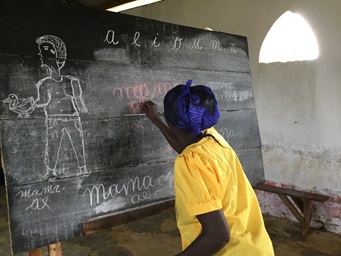A jumble of images surrounds me as I think about the 1964 Civil Rights Act. I see the signs in the big department stores in Birmingham designating water fountains and restrooms for the use of "White" and "Colored." Riding to my high school through a residential area peopled by black residents, I knew these high schoolers rode buses and streetcars past my neighborhood to the school meant exclusively for them. I never had a childhood friend whose skin was dark; all my playmates bore a lighter skin color.
I visualize the dividing markers on buses and streetcars, assigning the front to whites and the rear to blacks. The relative size of the two sections changed as the white section became more crowded to allow seating for more whites. But the section for blacks never grew larger as their riders crowded on. There could be empty seats up front, but riders overflowed into the aisles in the back.
An assassin's bullet disrupted the progress toward passing the Civil Rights bill proposed in 1963 by President John F. Kennedy. It fell to President Lyndon Johnson to wrestle the legislation through Congress.
read more
Interpreter Magazine invited six who were involved in the struggle for U.S. civil rights to share their reflections.
Many white Southern business operators argued that the government had no right to tell them who they had to serve in their restaurants or hotels. Public swimming pools were closed in cities over the South rather than allow black children to swim with white children. Public parks were abandoned.
Today, I see people socializing, based not on skin color, but because they enjoy one another's company and have common interests. I am able to go to restaurants with any person because of friendship, not outer appearances. Whereas I had no playmates my age who were black, my 11-year-old granddaughter Zoe tells me that three of her best friends have dark skins. It's wonderful to go to her school and see students, teachers and administrators of all races.
Even though churches were not included in the Act, I believe working and playing together during the week made worshipping together more desirable. I rejoice that, at last, local United Methodist churches are multi-colored, with members joining together in respect of our differences and recognition of our commonalities. It brings tears to my eyes when I observe the changes from likeness to variety in our churches. I thank God for those who have sacrificed to make it so.
In 1964, while her husband, Charles, was a pastor to churches in the Alabama-West Florida Conference, Bette Prestwood was a wife and mother to four daughters. She was part of an informal network encouraging parents to accept peacefully the orders for Mobile, Ala., to integrate its school system. She also urged members of the Women's Society for Christian Service (predecessor to United Methodist Women) to cooperate with school authorities for a peaceful school opening. When the Civil Rights Bill was introduced in 1963, she found churches and congregants divided with some ambivalent; others rabidly opposed; and others, highly supportive. At the same time the Prestwoods worked to garner support for the act, they heard of churches where illustrations of African Americans were cut out of Sunday school literature.
Like what you're reading? Support the ministry of UM News! Your support ensures the latest denominational news, dynamic stories and informative articles will continue to connect our global community. Make a tax-deductible donation at ResourceUMC.org/GiveUMCom.




